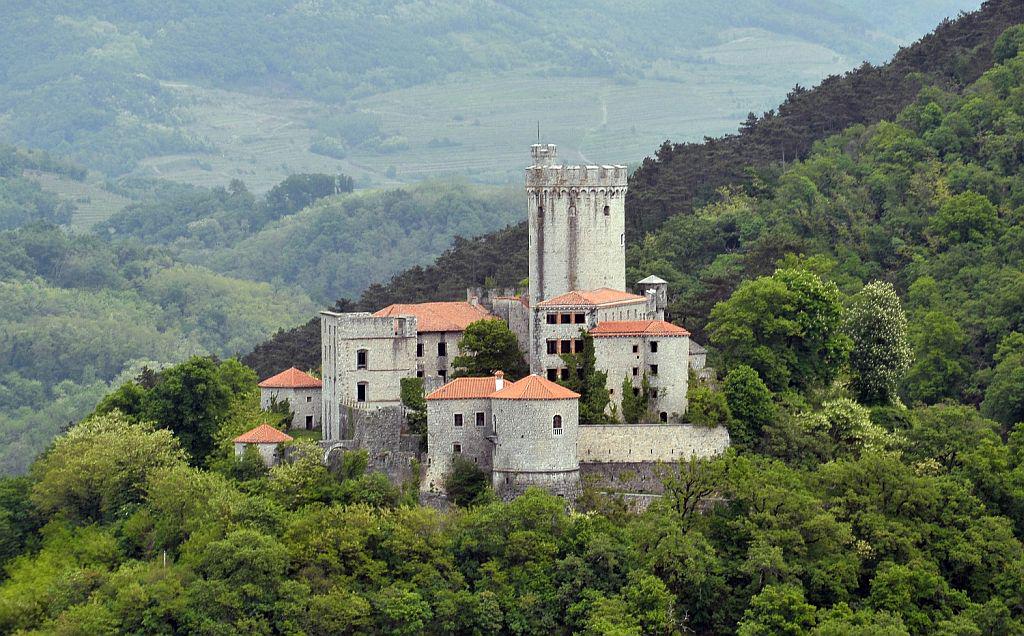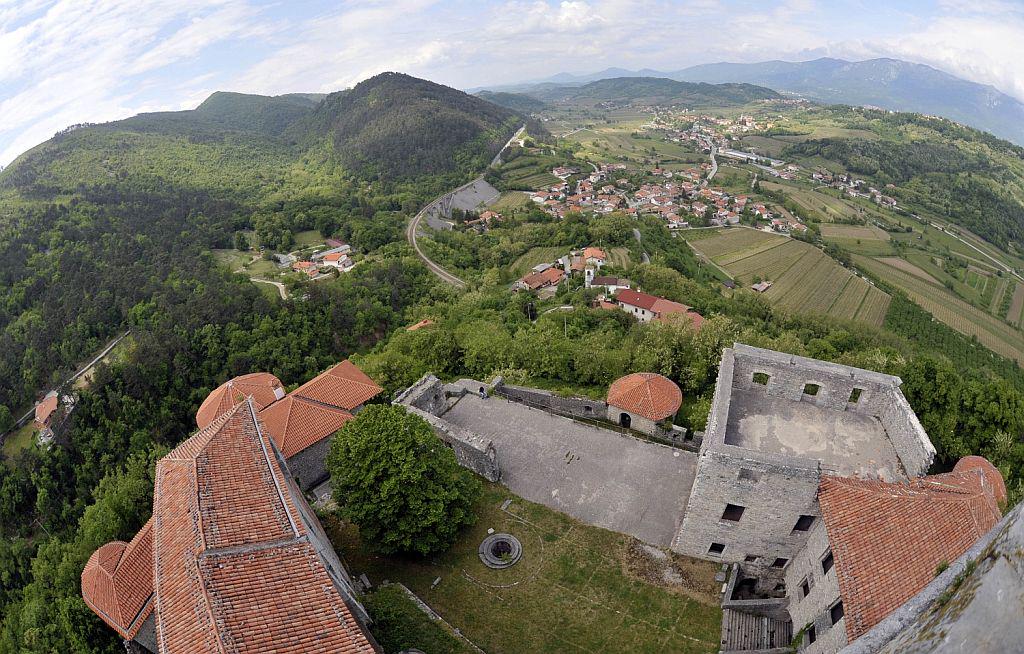


The castle is open on Saturdays, Sundays and holidays, and also on weekdays for groups by appointment. For guided tours of the castle, contact the Branik Tourism Society. Visitors can access all the exterior areas of the castle, including the courtyards, passages, stairs, gardens and terraces. A special attraction is the climb up to the 27-metre high viewing tower, with its wonderful views of the Vipava Valley.

Rihemberk, one of the most picturesque castles in Slovenia, has been protected since 1999 as a cultural monument of national importance. It fell into ruin over a long period of time, and owing to holes and dangerous damage to the walls it was closed to the public. When the municipality of Nova Gorica acquired the castle from the state in 2013, it started the process of renovation in cooperation with the Branik Local Community. One of the conditions for the transfer of ownership from the state to the local community was that the municipality of Nova Gorica would have to re-open the castle to visitors by 2023. Last year the municipality drew up a renovation conceptual plan, and this year they worked out the conservation plan, which is the basis for obtaining a construction permit.
Now that the most urgent repairs have been made, visitors can tour the exterior sections of the castle, the gardens and terraces. The interior sections will be renovated in stages, with part of the building being intended for various activities such as an information office and a small catering establishment in the entrance tower. The plans call for part of the castle to remain closed to tours and the general public even after renovation. The Nova Gorica authorities want those sections to be arranged for special educational purposes. In 2016 the city authorities joined the Restaura project, which envisages a model of public-private partnership for long-term development.
The aim is for Rihemberk Castle to become a cultural, scientific and tourism centre for this part of the Primorska region, and a space for reflection and creativity.
Rich history
Rihemberk Castle is an extensive medieval fortification with an exterior defensive wall and towers, residential sections, cisterns and a prominent central Romanesque keep. Ever since prehistoric times (1600 – 700 BCE) there was a fortification in the area of the castle, protecting access to the Karst plateau and then to the sea, while at the same time it allowed control of transport through part of the Vipava Valley. The castle complex started to emerge in the 13th century. It was first mentioned in 1230 in connection with its original feudal owners, the house of Rihemberk, then in the first half of the 13th century the Counts of Gorizia had it additionally fortified. The later Habsburg owners added two sections along the walls with towers, first at the beginning of the 16th century in the late Gothic style, and then later in a Renaissance design. In 1646 Rihemberk came into the possession of the House of Lanthieri, which completed the castle’s appearance. The final (female) descendant of the Lanthieris married Count Lewetzow, and the castle remained in the ownership of the Lewetzow-Lanthieri family until World War II.
During World War II the castle was mined and burned. In its long history it has suffered much damage, but that inflicted in the last war was the greatest, with the castle then falling into ruin. It was only in the 1960s that the castle underwent its first renovation works, which have continued on and off to the present day.
Mysterious inhabitants of the castle
Rihemberk Castle is exceptionally important in cultural and historical terms. Previous archaeological excavations have revealed evidence of settlement in prehistoric times, in late Antiquity and in the Middle Ages, with the remains of buildings and pottery finds being uncovered.
Today the castle stands out as an important refuge for bats, which have chosen the abandoned castle cellars and towers as their home, from late spring to early autumn. Female bats come here to give birth to their young and care for them. To date a full 11 species of bats have been recorded, and since they include two rare and endangered species, it was decided that this part of the castle would not be renovated or opened to the public. The species include a large number of highly endangered large horseshoe and Geoffroy’s bats, which are vital to the local ecology. Indeed, due to their presence here, the area of the Branica Valley was included as one of the Natura 2000 protected nature sites.
Europe is home to only the smaller bats, and has just 32 of the 1,116 species discovered to date around the world. So far, at least 30 of these have been found in Slovenia.
The castle is open on Saturdays, Sundays and holidays, and also on weekdays for groups by appointment. For guided tours of the castle, contact the Branik Tourism Society. Visitors can access all the exterior areas of the castle, including the courtyards, passages, stairs, gardens and terraces. A special attraction is the climb up to the 27-metre high viewing tower, with its wonderful views of the Vipava Valley.


































































